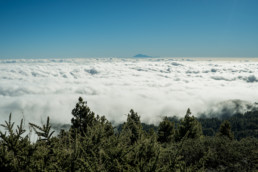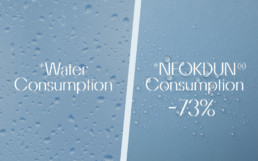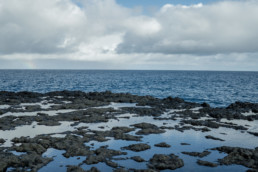Sustainability

Extensive and detailed studies provided by the most prestigious internationalInstitutions, have revealed that down is the most sustainable type of filling.
Extensive and detailed studies provided by the most prestigious internationalInstitutions, have revealed that down is the most sustainable type of filling.
LCA (Life Cycle Assessment) study from Long Trail Sustainability, shows that Down is way more sustainable than Polyester or even recycled

LCA (Life Cycle Assessment) study from Long Trail Sustainability, shows that Down is way more sustainable than Polyester or even recycled

Down is the most performant insulation material in the world, whilst being 100%natural, biodegradable and recyclable.
Down is the most performant insulation material in the world, whilst being 100% natural, biodegradable and recyclable.
Neokdun vs Synthetic

Environmental Footprint of Down vs. Polyester Fill Material Understanding the environmental impacts of down fill material and how down fill material compares to polyester through a life cycle assessment. As a waste of the food industry down is important of a large circular economy and has the ability to be processed in a way that can have a very low impact.
Environmental Footprint of Down vs. Polyester Fill Material Understanding the environmental impacts of down fill material and how down fill material compares to polyester through a life cycle assessment. As a waste of the food industry down is important of a large circular economy and has the ability to be processed in a way that can have a very low impact.
FROM 85% TO 97% LOWER ENVIRONMENTAL IMPACT
Neokdun fill material has between 85% - 97% lower environmental impact than a recycled synthetic alternative in all the impact categories analyzed.
18 TIMES LESS
CLIMATE CHANGE IMPACT
Neokdun has 18 time less climate change impact than recycled synthetic alternatives and excelled in all areas with the exception of water use.
12 TIMES LESS
POLLUTANT
Studies based on the comparison of different types of “sustainable” fillings have revealed that recycled polyester, although being exposed to the recycling process, is still 12 times more pollutant than down.
According to a recently published LCA it has been shown that down has a fraction of the environmental impact compared to the most comparable recycled petroleum-based down alternative fibers.. And those alternative fibers still cannot come close to matching the warmth-to-weight ratio, durability, durability, years of use, and range of warmth provided by the best down insulation. As a food industry waste, down is an important part of a large circular economy and has the ability to be processed in an a way that can have a very low impact providing one of the best insulation for the planet.
According to a recently published LCA it has been shown that down has a fraction of the environmental impact compared to the most comparable recycled petroleum-based down alternative fibers.. And those alternative fibers still cannot come close to matching the warmth-to-weight ratio, durability, durability, years of use, and range of warmth provided by the best down insulation. As a food industry waste, down is an important part of a large circular economy and has the ability to be processed in an a way that can have a very low impact providing one of the best insulation for the planet.
Water Use

We reuse 73% of the water we consume. For us, ruse is the best tool to move towards a circular use of water.All the water consumed and recirculated goes through our integrated treatment plant before being returned to the supply network. Reuse is the only way we have to relate to water: We do it out of respect for the environment, circular economy and energy efficiency, but above all out of common sense.
We reuse 73% of the water we consume. For us, ruse is the best tool to move towards a circular use of water.All the water consumed and recirculated goes through our integrated treatment plant before being returned to the supply network. Reuse is the only way we have to relate to water: We do it out of respect for the environment, circular economy and energy efficiency, but above all out of common sense.

All the water we use goes through our own treatment plant where we clean it for reuse. By cleaning and reusing we improve the quality of the water before returning it to the supply network. Reusing and cleaning water is one of the best contributions to the conservation of nature and the environment. By reusing the water that we have previously consumed, we are reducing the demand for raw water from the natural environment, increasing the number of people who can access drinking water.
All the water we use goes through our own treatment plant where we clean it for reuse. By cleaning and reusing we improve the quality of the water before returning it to the supply network. Reusing and cleaning water is one of the best contributions to the conservation of nature and the environment. By reusing the water that we have previously consumed, we are reducing the demand for raw water from the natural environment, increasing the number of people who can access drinking water.
Renewable Energy
Our facilities have an energy efficient LED lighting system.We have a control system, presence detectors, natural light quantity detectors for maximum use, photoelectric cells, timer switches, and different regulators that optimize the use of lighting.
Our facilities have an energy efficient LED lighting system.We have a control system, presence detectors, natural light quantity detectors for maximum use, photoelectric cells, timer switches, and different regulators that optimize the use of lighting.
CO2 emission
Our 2022 – 2025 sustainable plan aims to have 100% efficient electricity consumption by working with renewable and sustainable energies. We will also generate more self-consumption and use surpluses to heat water and reduce gas consumption.
Our 2022 – 2025 sustainable plan aims to have 100% efficient electricity consumption by working with renewable and sustainable energies. We will also generate more self-consumption and use surpluses to heat water and reduce gas consumption.
